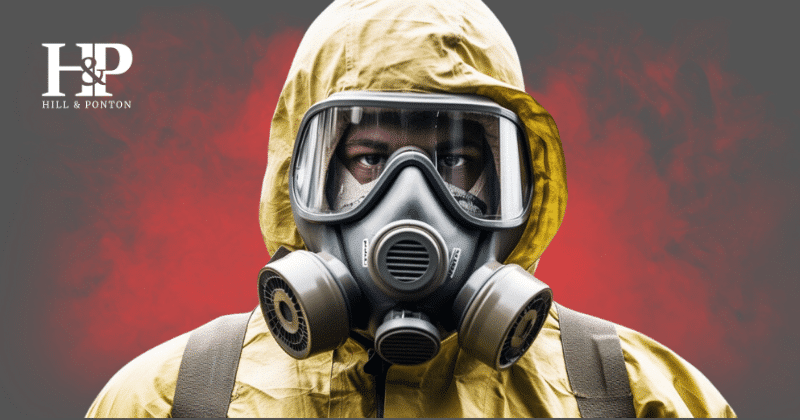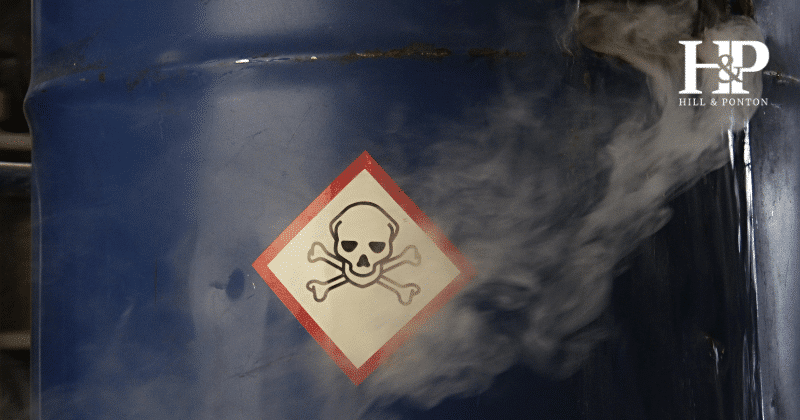Fort McClellan in Alabama has a long, tumultuous history as a toxic exposure nightmare for U.S military personnel.
This military installation, originally known as Camp McClellan, has been a breeding ground for various chemical, biological, and radioactive compounds.
Want to know if your base was one listed for toxic exposure? Check out our interactive map.
It once functioned as a training center for the Alabama National Guard and the Army Chemical Corps.
In 1999, it was closed under the Base Realignment and Closure (BRAC) legislation.
If you think you’ve been affected by toxic exposures at Fort McClellan, it’s crucial to explore your options for an appeal.
Toxic Exposures at Fort McClellan: What We Know
One of the most concerning elements about Fort McClellan is its historical involvement in chemical warfare training, which included the storage and testing of hazardous agents like Agent Orange.
This places Fort McClellan alongside other military bases like Camp Lejeune in North Carolina, which have also faced scrutiny for toxic exposures.
Agent Orange exposure at Fort McClellan has been a significant concern for veterans, especially those from the Vietnam War era.
The Chemical Corps trained extensively with these toxic substances, and their long-term effects are only beginning to be understood.
Download the Environmental Baseline Survey & Exclusive Documents
Other Concerns Fort McClellan Veterans Face
While many Fort McClellan veterans have stepped forward with health problems attributed to toxic exposures, they still face a variety of hurdles in obtaining benefits and recognition.
Some of the issues they face include:
- The VA has not fully recognized linking issues from toxic exposure to service at Fort McClellan.
- Fort McClellan was a location for training of troops who served in the Gulf War and may be connected to Gulf War illness.
- Nearby Anniston Army Depot has also been a source of environmental toxins.
- Fort McClellan was home to the Army Chemical Corps School and Army Military Police School, both having close contact with toxic substances.
- During World War I and World War II, Fort McClellan was also an important training ground and has a history of chemical warfare.
Did the VA Deny Your Disability Claim?
Let our team review your case today!
Get a Free Case EvaluationList of Toxic Chemicals stored at Fort McClellan, Alabama
Starting in the 1920s, Fort McClellan and Anniston, Alabama, were home to a host of deadly chemicals. Below is a list of the different chemicals and examples of medical conditions they may have contributed to in veterans. This list is not exhaustive.
Polychlorinated Biphenyls (PCBs)
- Skin conditions,
- liver damage/cancer
- anemia
- stomach cancer
- thyroid gland injuries
- changes in the immune system
- behavioral changes
- impaired reproductive systems
Mace
Tear and Mustard Gas
- Bronchitis
- long-term respiratory problems
- lower sperm count
- respiratory cancers
White Phosphorous
Cobalt (Co-60)
- changes in genetic materials of cells
- certain types of cancer
Uranium
- Kidney damage
- Increased probability of cancer
Plutonium
- Bone Cancer
- Liver Cancer
- Lung Cancer and Respiratory Diseases
- Impaired Immune System
Cesium (Cs-137)
Napalm-B
Agent Orange
- Parkinson’s disease
- Myelomas
- Lymphomas
- Hodgkin’s disease
- Diabetes Type II
- Leukemia
- Amyloidosis
- Peripheral Neuropathy (early-onset)
- Prostate Cancer
- Respiratory cancers
- Ischemic heart disease
- Hypertension (high blood pressure)
- Monoclonal gammopathy of undetermined significance
- Porphyria cutanea tarda
Agent Blue
- bladder cancer
- stomach cancer
- lymphatic cancers
- lung cancers
- leukemia
- skin cancers
- liver cancer
Nerve Agents
- tightness in the chest
- excessive salivation
- abdominal cramps
- diarrhea
- blurred vision
- tremors
- paralysis
Blister Agents
Please note that the above conditions are not an exhaustive list of the health effects of exposure to the toxins at Fort McClellan.
What You Can Do If You’ve Been Exposed at Fort McClellan
If you’ve been exposed to toxic substances at Fort McClellan and believe they have impacted your heath, there are a variety of things you can do.
Consider taking some of the following actions:
- Contact Veterans Affairs for a medical screening.
- Join the VA Health Registry.
- Consult with the State Board for advocacy
- Get expert legal advice and an independent medical opinion.
- Consider potential PACT Act benefits.
- Check for National Academy of Science studies about chemical exposure.
- Speak to Veterans Groups and support groups advocating for recognition.
- Visit military base health centers (including Fort McClellan’s).
Benefits Available for Toxic Exposure Claims at Fort McClellan
If you’re a veteran who served at Fort McClellan and you’re experiencing health problems possibly related to toxic exposures, you may be eligible for benefits from Veterans Affairs.
Understanding your rights and the options available to you can be a significant first step in receiving the care and compensation you deserve.
Here’s a list of some of the benefits you may be entitled to:
- Veterans Affairs provides disability compensation for veterans and their dependents for diseases that are service-connected.
- For severe cases, you may qualify for Special Monthly Compensation (SMC), in addition to your disability payments.
- Veterans with verified toxic exposures are eligible for health care services through the VA.
- If a veteran passes away due to conditions linked to toxic exposure, their spouse or dependents may be eligible for Dependency and Indemnity Compensation (DIC) benefits.
- For those who have difficulty securing and maintaining employment because of toxic exposure conditions, Vocational Rehabilitation and Employment (VR&E) is also available.
- Veterans can also apply for educational assistance for themselves or their dependents through programs like the Post-911 GI Bill or Montgomery GI Bill, among others.
- Special housing grants are available for veterans who are permanently and substantially disabled due to their service.




